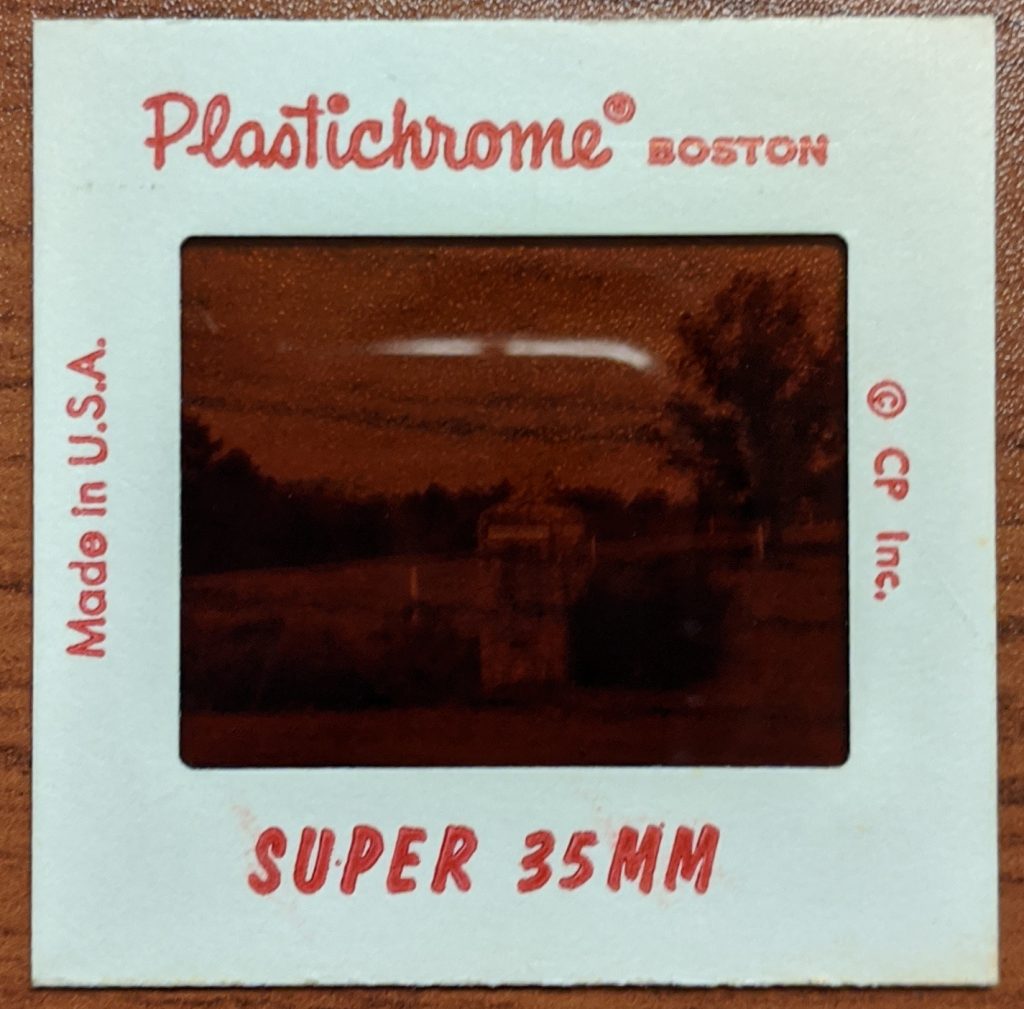To tell the difference between the two sides of a slide, one can angle the slide with a light overhead and see that one side is very shiny and acts like a mirror, while the opposite side is dull and is the emulsion side. Sometimes the distinction becomes very difficult to make out, especially with slides that are older or damaged.
Other ways to tell is to scan a slide with writing and see if it is right-reading. If it is, then the slide has been scanned with the sensor/camera capturing through the shiny side. One can usually get a better image when scanning through the emulsion side but that requires the operator to mirror/flip the image in the scan software or in an image processor, such as Photoshop.
You can refer to the production stamp or other writing to determine which side has the emulsion. We’ve put together examples of the various slides we have encountered to help others.
Shiny side of slides with emulsion side opposite
Emulsion side of slides
Most Kodak film (if not all) are placed in holders with the emulsion on the same side as the Kodak wording. If a holder reads, “Lamp side” or “This side toward screen”, then that side is the emulsion side of the slide.
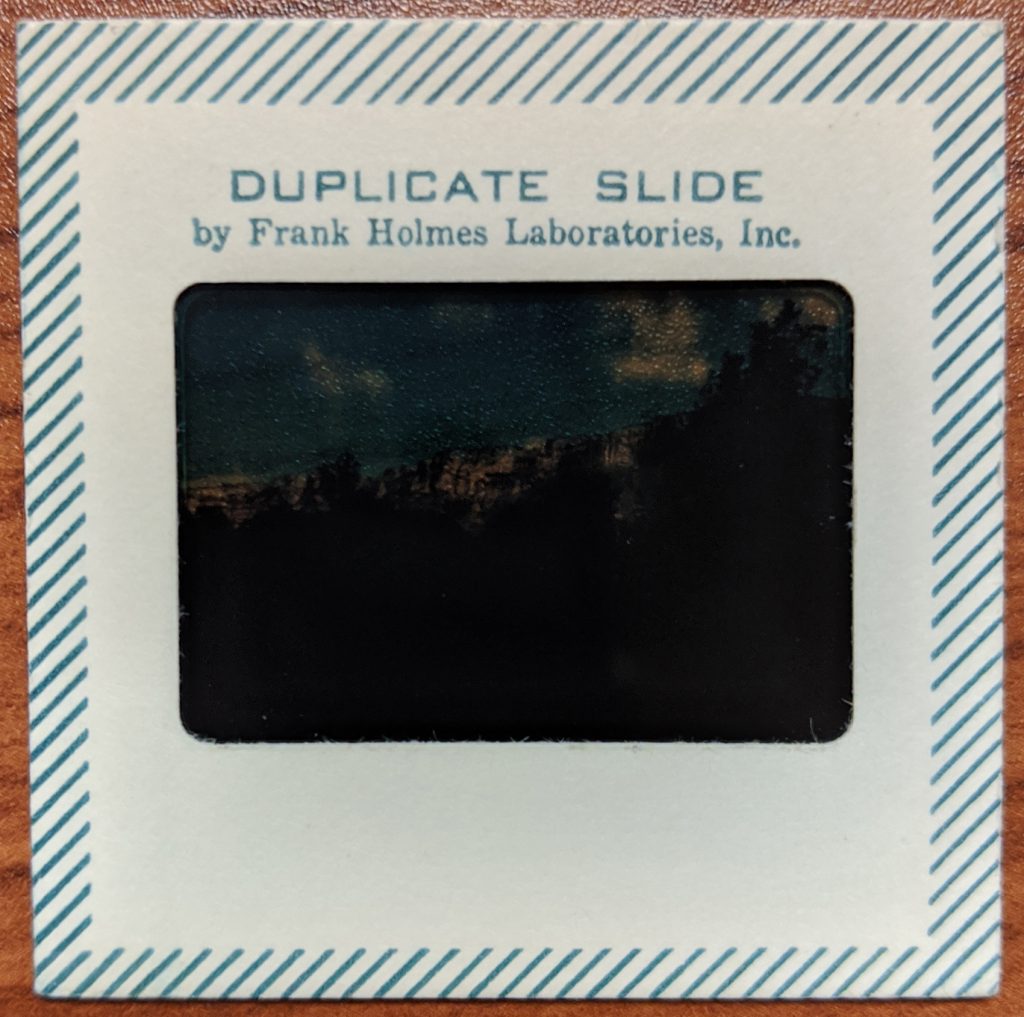
Frank Roberts Laboratories. Emulsion side up. 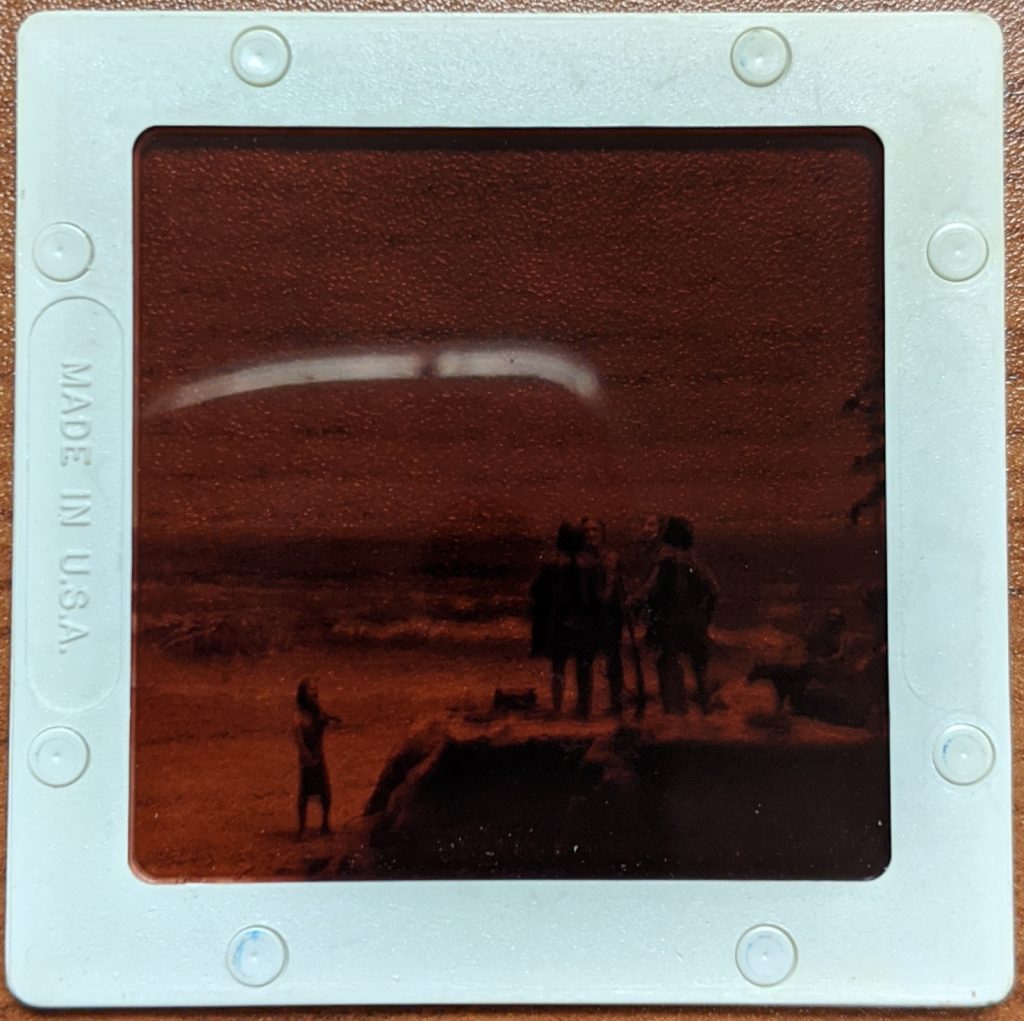
Panavue slide. Emulsion side up. 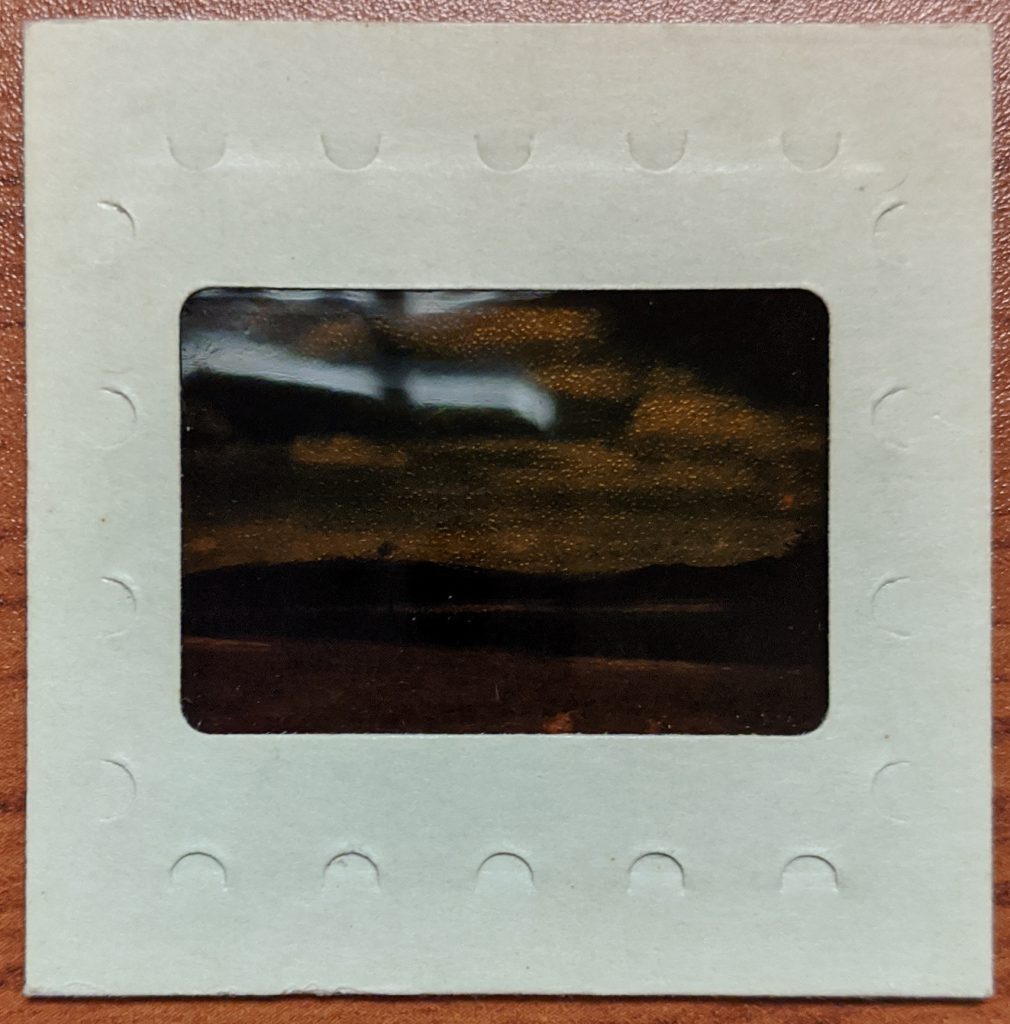
Slide with perforations and no writing. Emulsion side up. 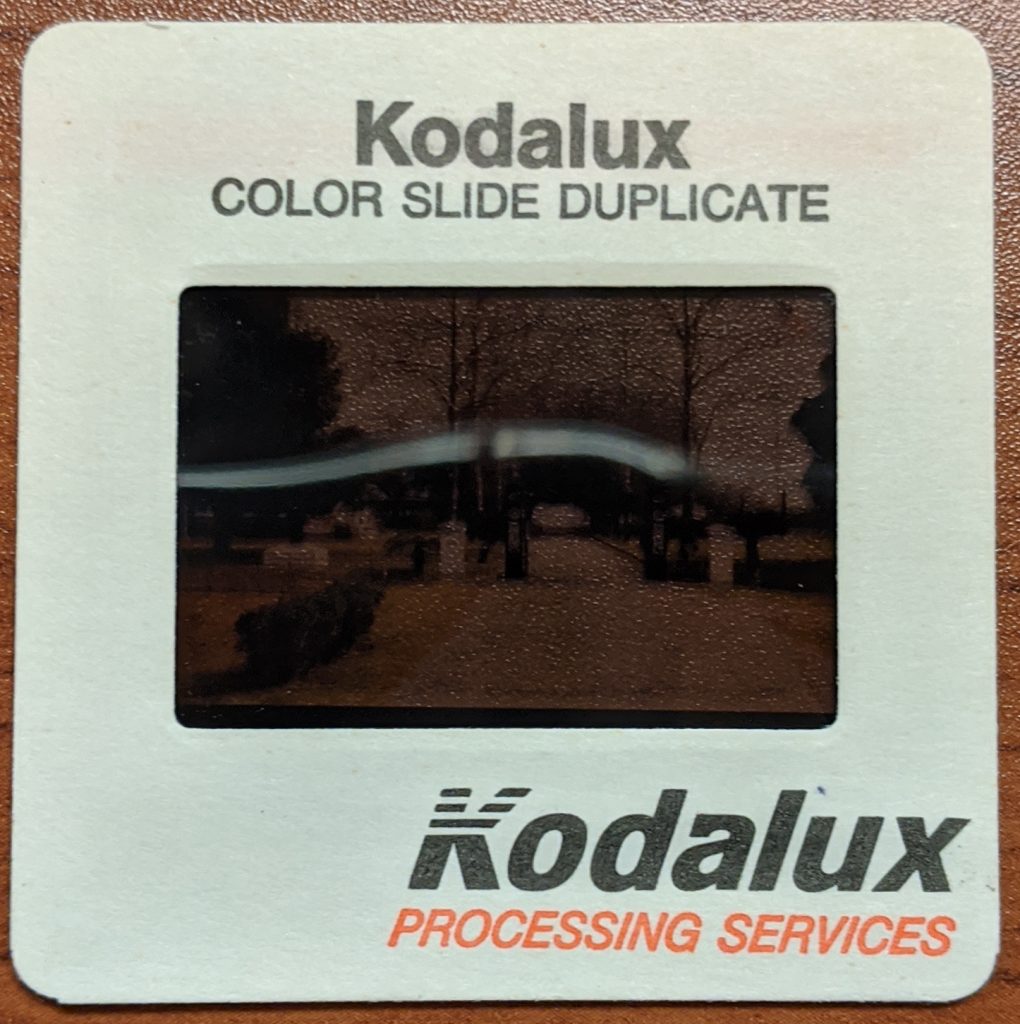
Kodalux slide. Emulsion side up. 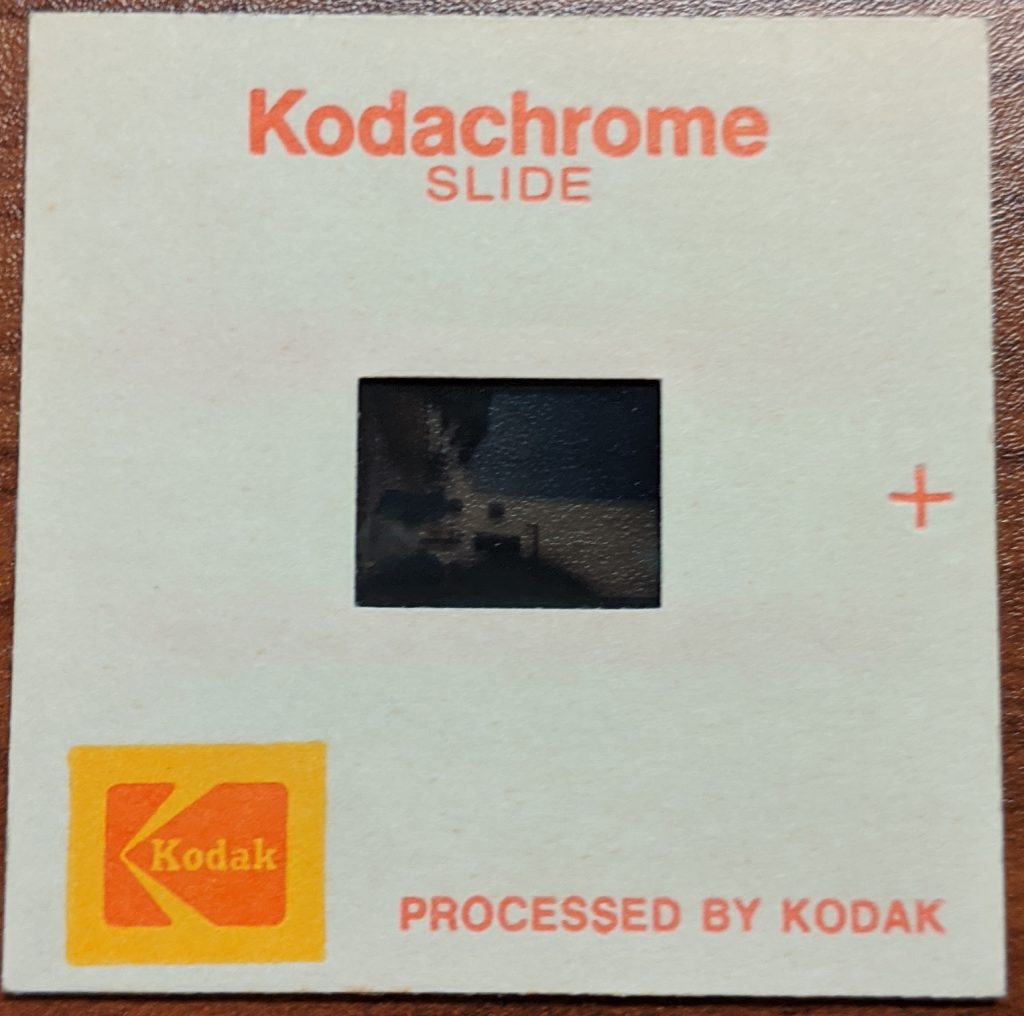
Kodachrome slide. Emulsion side up. 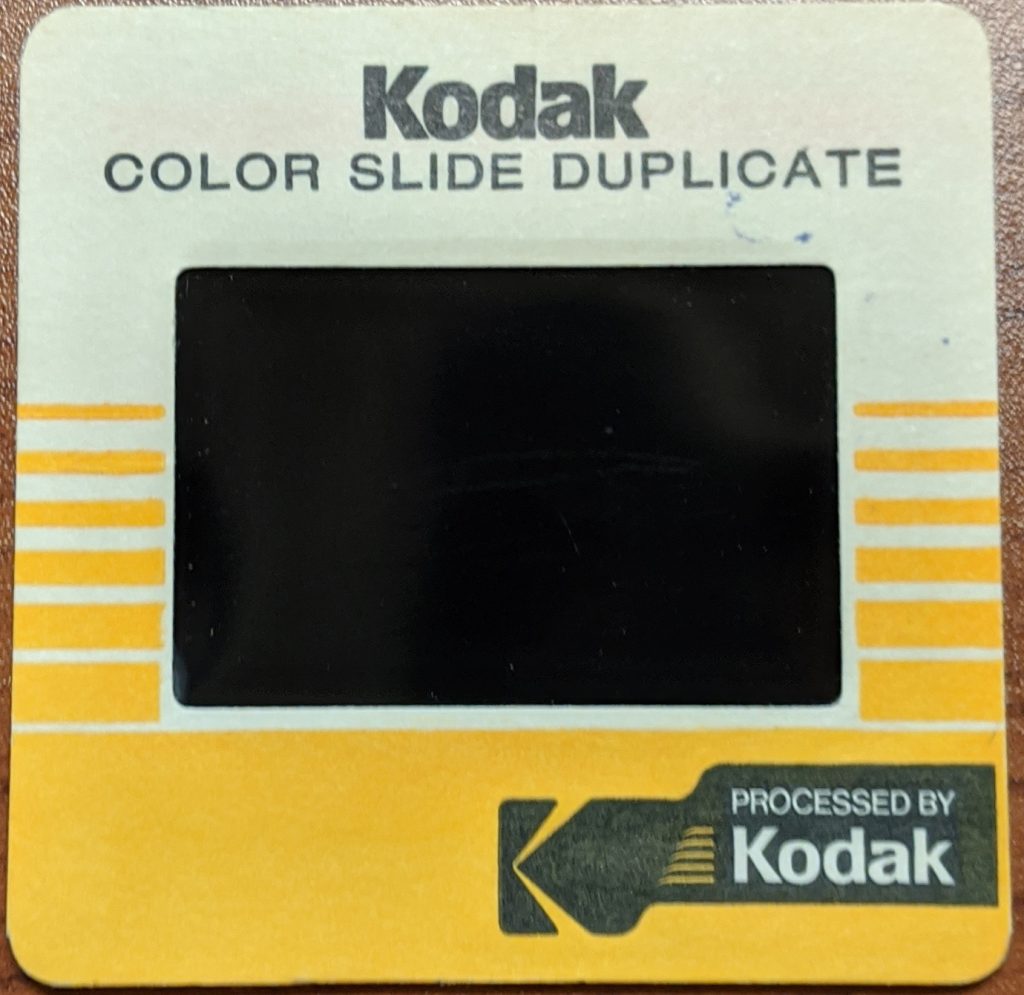
Kodak Color Slide Duplicate slide. Emulsion side up. 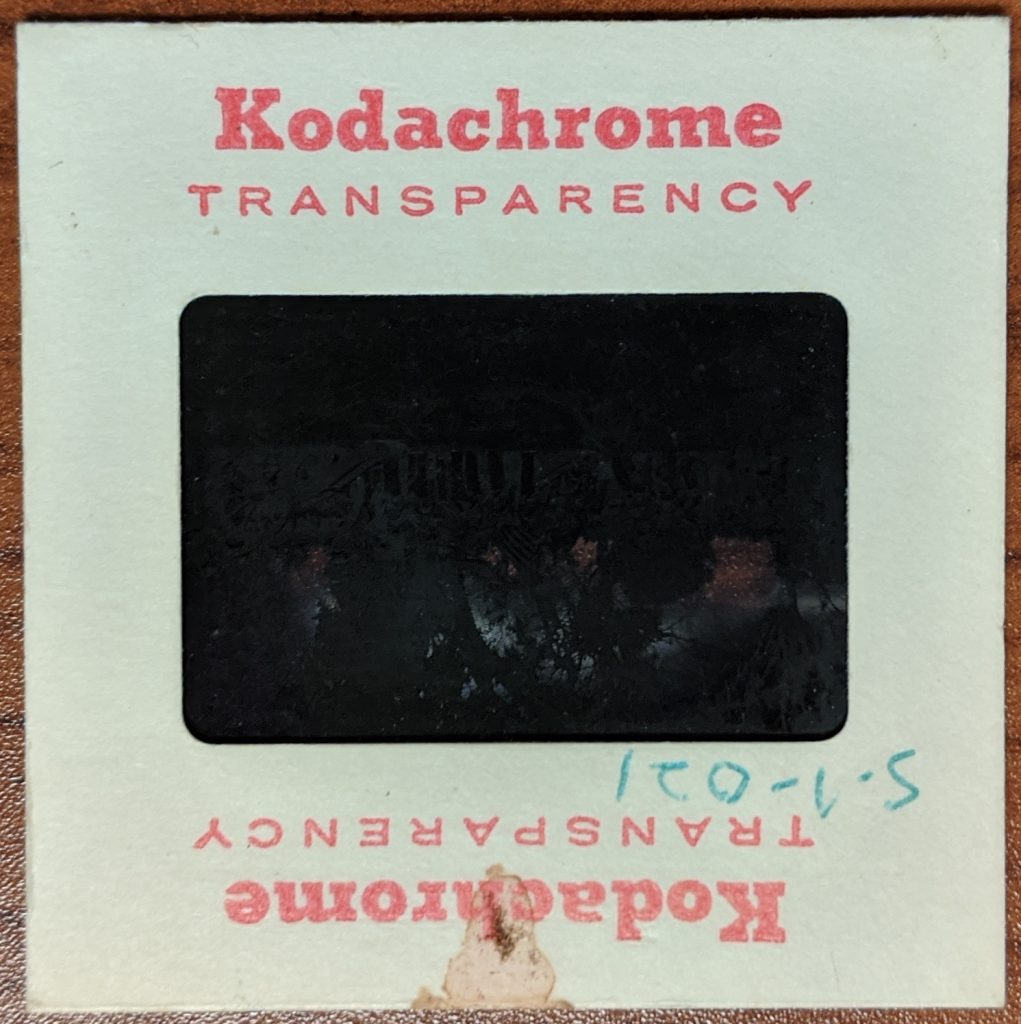
Kodachrome Transparency slide. Emulsion side up. 
Kodachrome Duplicate slide. Emulsion side up. 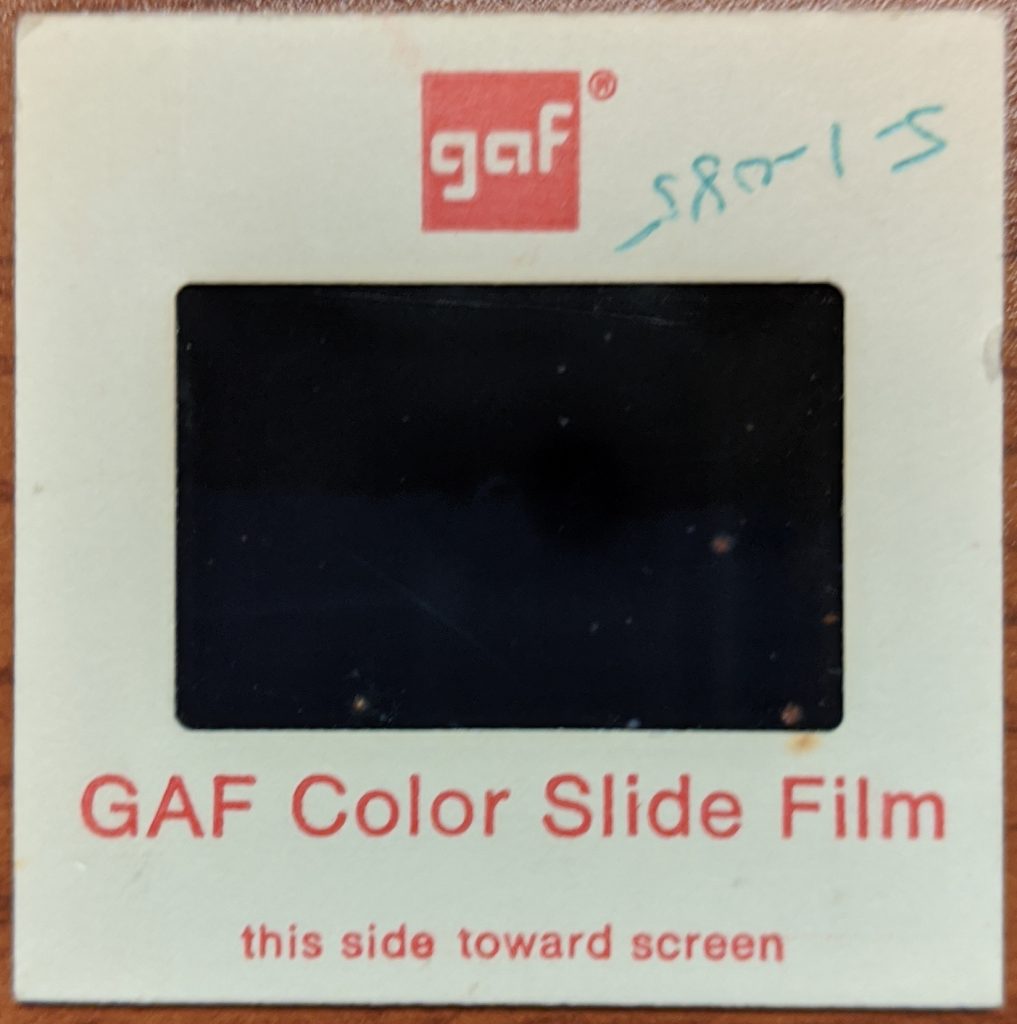
GAF slide. Emulsion side up. 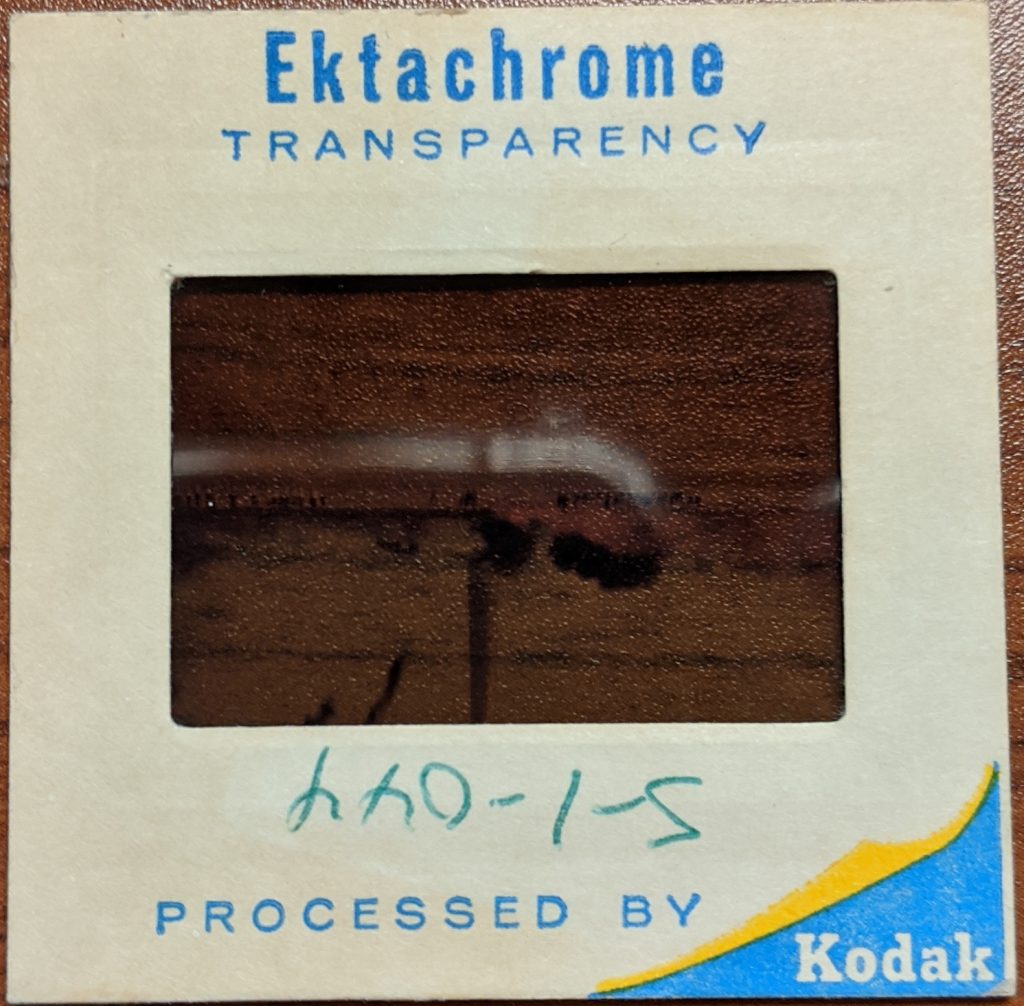
Etkachrome Transparency slide. Emulsion side up. 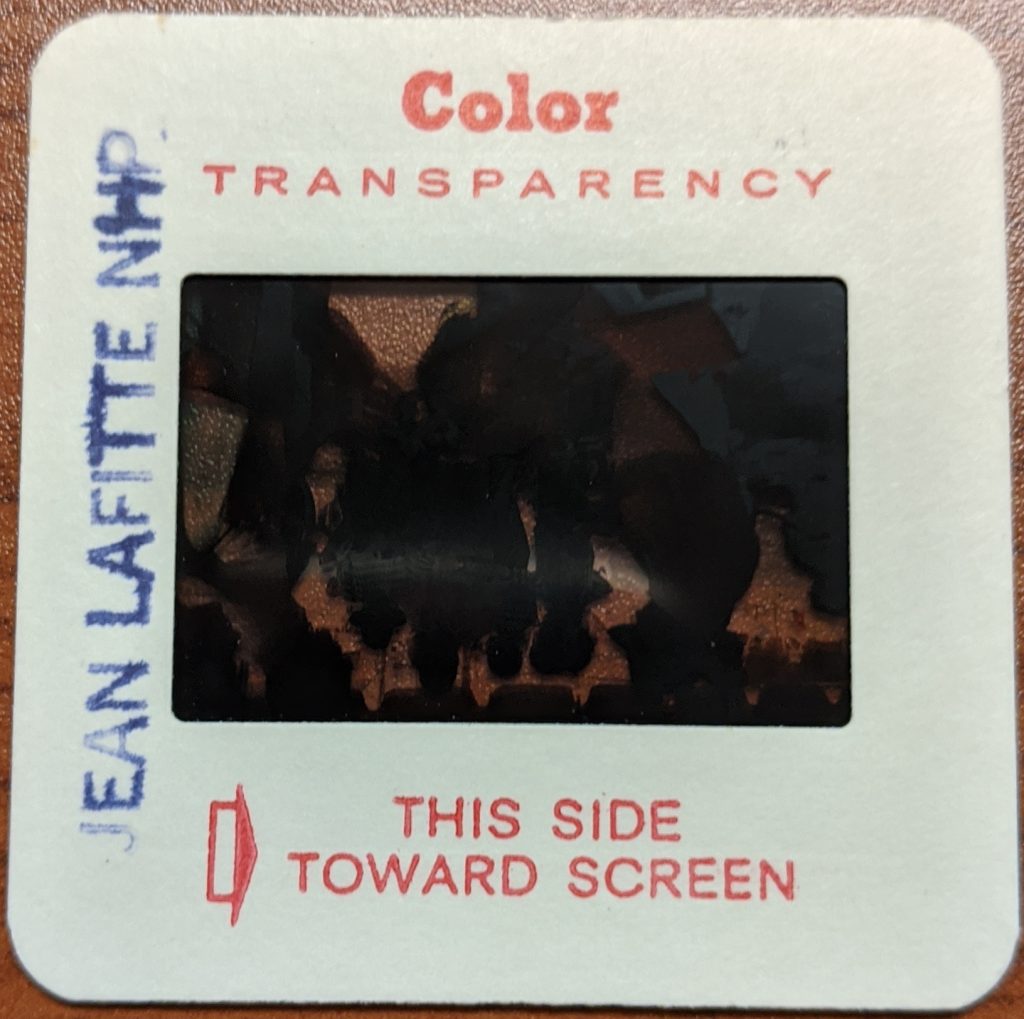
Color Transparency slide. Emulsion side up.
